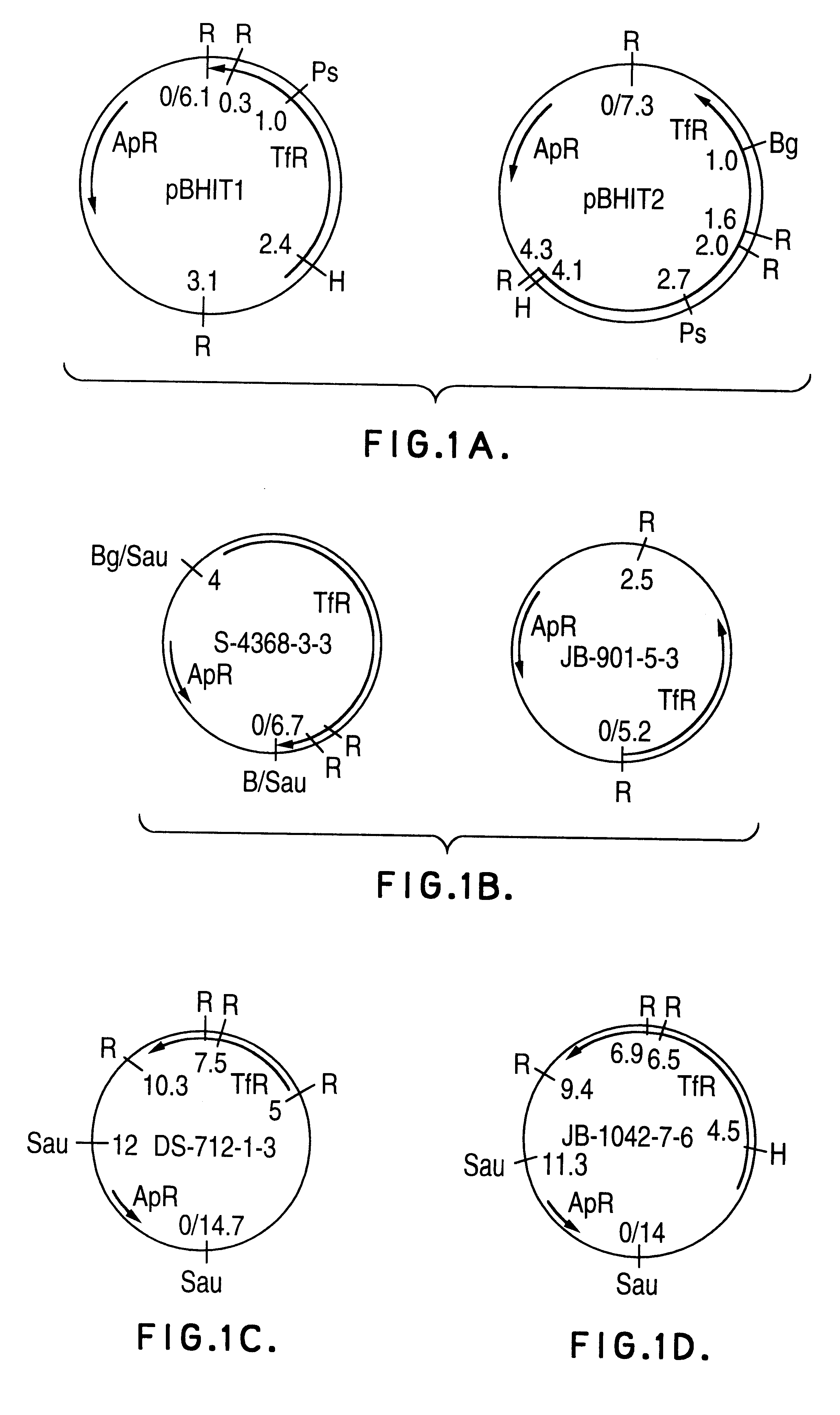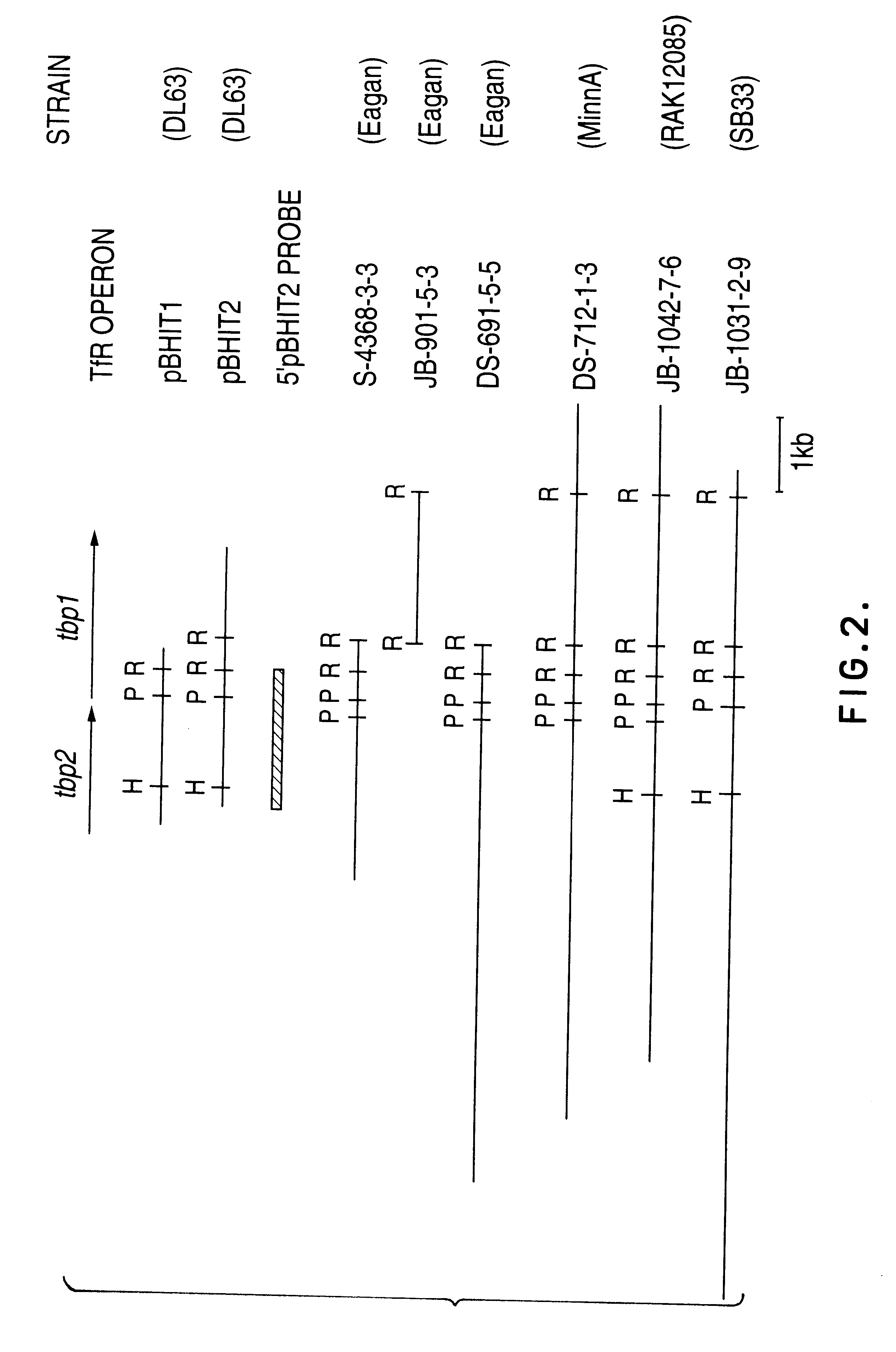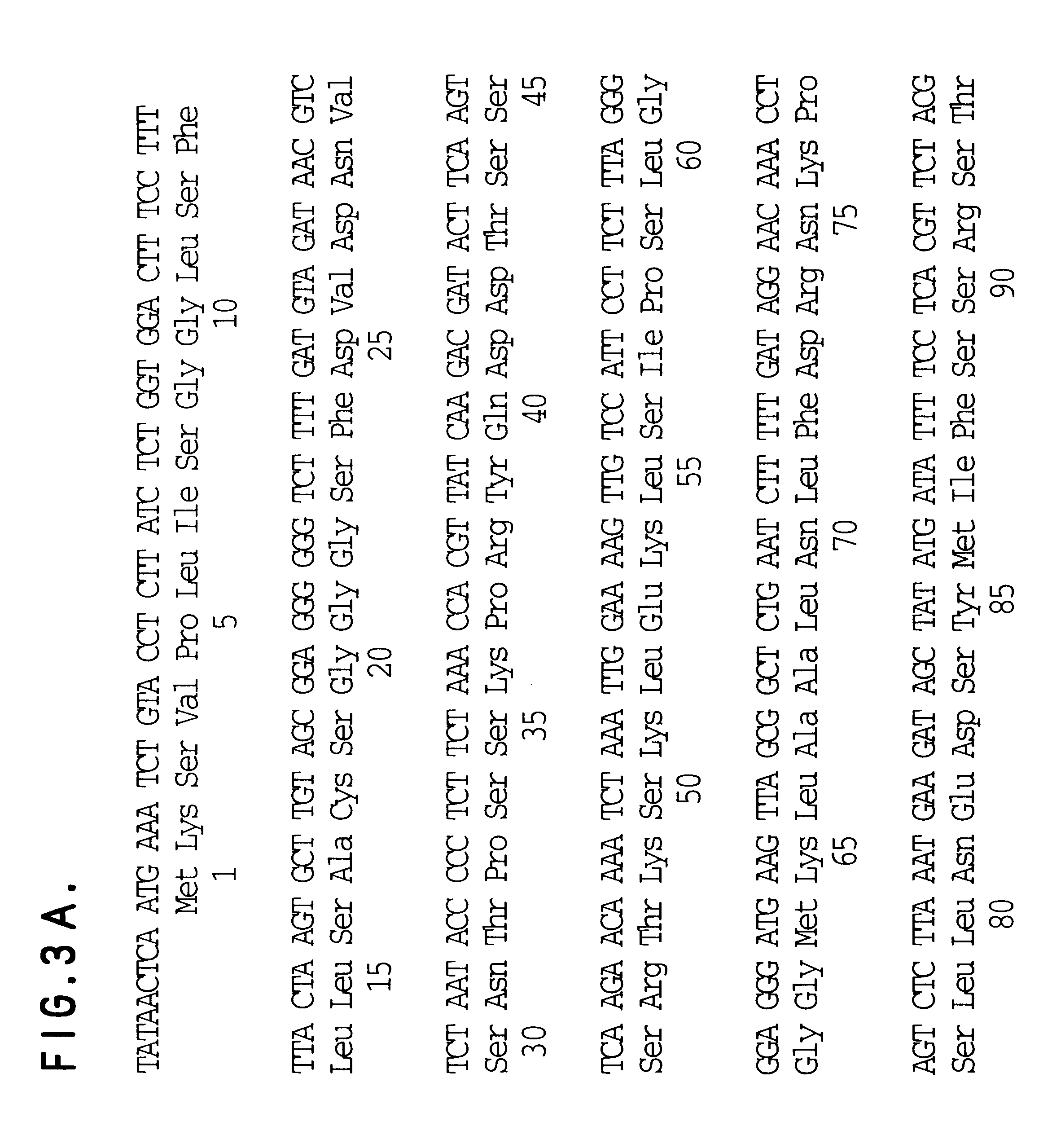Transferrin receptor genes
a technology of transferrin receptor and gene, applied in the field of transferrin receptor genes, can solve the problems of many of the causative organisms of otitis media becoming resistant to antibiotic treatment, and achieve the effect of increasing the host immune response to hepatitis b virus and increasing their immunogenicity
- Summary
- Abstract
- Description
- Claims
- Application Information
AI Technical Summary
Benefits of technology
Problems solved by technology
Method used
Image
Examples
example 1
This Example illustrates the preparation of chromosomal DNA from H. influenzae strains DL63, Eagan, MinnA, and PAK 12085, and SB33.
H. influenzae strains were grown on Mueller-Hinton agar or in brain heart infusion broth as described by Harkness et al 1992.
A. Chromosomal DNA extraction from Haemophilus influenzae type b DL63
Chromosomal DNA was prepared as follows. Two hundred and fifty ml of culture were pelleted by centrifugation at 8,000 rpm in a Beckman J14 rotor for 15 minutes. The pellet was washed with 200 ml of 50 mM Tris-HCl, pH 8.0, centrifuged as before, resuspended in 12.5 ml of 50 mM Tris-HCl, 50 mM EDTA, pH 8.0, and frozen at -20.degree. C. Then 1.25 ml of a 10 mg / ml lysozyme solution in 0.25M Tris-HCl, pH 8.0, was added to the frozen cell pellet. The pellet was thawed and incubated on ice for 45 minutes. Next, 2.5 ml of a solution of 1 mg / ml proteinase K in 0.5% SDS, 0.4M EDTA, 50 mM Tris-HCl, pH 7.5 was added and the mixture incubated at 50.degree. C. for 1 hour with o...
example 2
This Example illustrates the preparation of chromosomal libraries.
A . H. influenzae DL63-.lambda.ZAP library
100 .mu.g of H. influenzae DL63 chromosomal DNA in TE was mechanically sheared in a 1 ml syringe with a 25 gauge needle. The sheared DNA was made blunt-ended by adding water to a final volume of 405 .mu.l, 45 .mu.l of 10.times. Si nuclease buffer (2M NaCl, 50 mM NaOAc, pH 4.5, 10 mM ZnSO.sub.4, 5% glycerol), and 1.7 .mu.l of S1 nuclease at 100 U / .mu.l and incubating at 37.degree. C. for 15 min. The sample was extracted once with phenol / chloroform and once with chloroform and 1 ml of ethanol was added to precipitate the DNA. The sample was incubated on ice for 10 min or at -20.degree. C. overnight and the DNA was harvested by centrifugation in a microfuge for 30 minutes. The DNA was washed with 70% ethanol and dried. The Eco RI sites in the DNA sequence were methylated using standard procedures. To this methylated DNA was added 5 .mu.l of 100 mM MgCl.sub.2, 8 .mu.l of dNTP mix ...
example 3
This Example illustrates screening of the libraries
A. H. influenzae DL63-.lambda.ZAP expression library
Tbp1 and Tbp2 proteins were affinity purified on solid phase human transferrin (hTf). Briefly, a 20 ml hTf-Sepharose column was prepared according to the manufacturer's protocol for coupling protein ligands to CNBr-activated Sepharose (Sigma). The resulting matrix was washed with 3 column volumes of 50 mM Tris-HCl, 1M NaCl, 6M guanidine-HCl, pH 8.0 to remove non-covalently bound hTf. The column was then equilibrated with 50 mM Tris-HCl, pH 8.0 and bound hTf was iron loaded using 1 ml of 10 mg / ml FeCl.sub.3 in buffer containing 100 mM each of sodium citrate and sodium bicarbonate, pH 8.6, followed by 2 column volumes of 50 mM Tris-HCl, 1M NaCl, pH 8.0. Total bacterial membranes (300 mg total protein) were prepared from H. influenzae strain DL63 grown on iron deficient media as described previously (Schryvers et al., 1989). Membranes were diluted to 2 mg / ml in 50 mM Tris-HCl, 1M NaCl...
PUM
 Login to View More
Login to View More Abstract
Description
Claims
Application Information
 Login to View More
Login to View More - R&D
- Intellectual Property
- Life Sciences
- Materials
- Tech Scout
- Unparalleled Data Quality
- Higher Quality Content
- 60% Fewer Hallucinations
Browse by: Latest US Patents, China's latest patents, Technical Efficacy Thesaurus, Application Domain, Technology Topic, Popular Technical Reports.
© 2025 PatSnap. All rights reserved.Legal|Privacy policy|Modern Slavery Act Transparency Statement|Sitemap|About US| Contact US: help@patsnap.com



